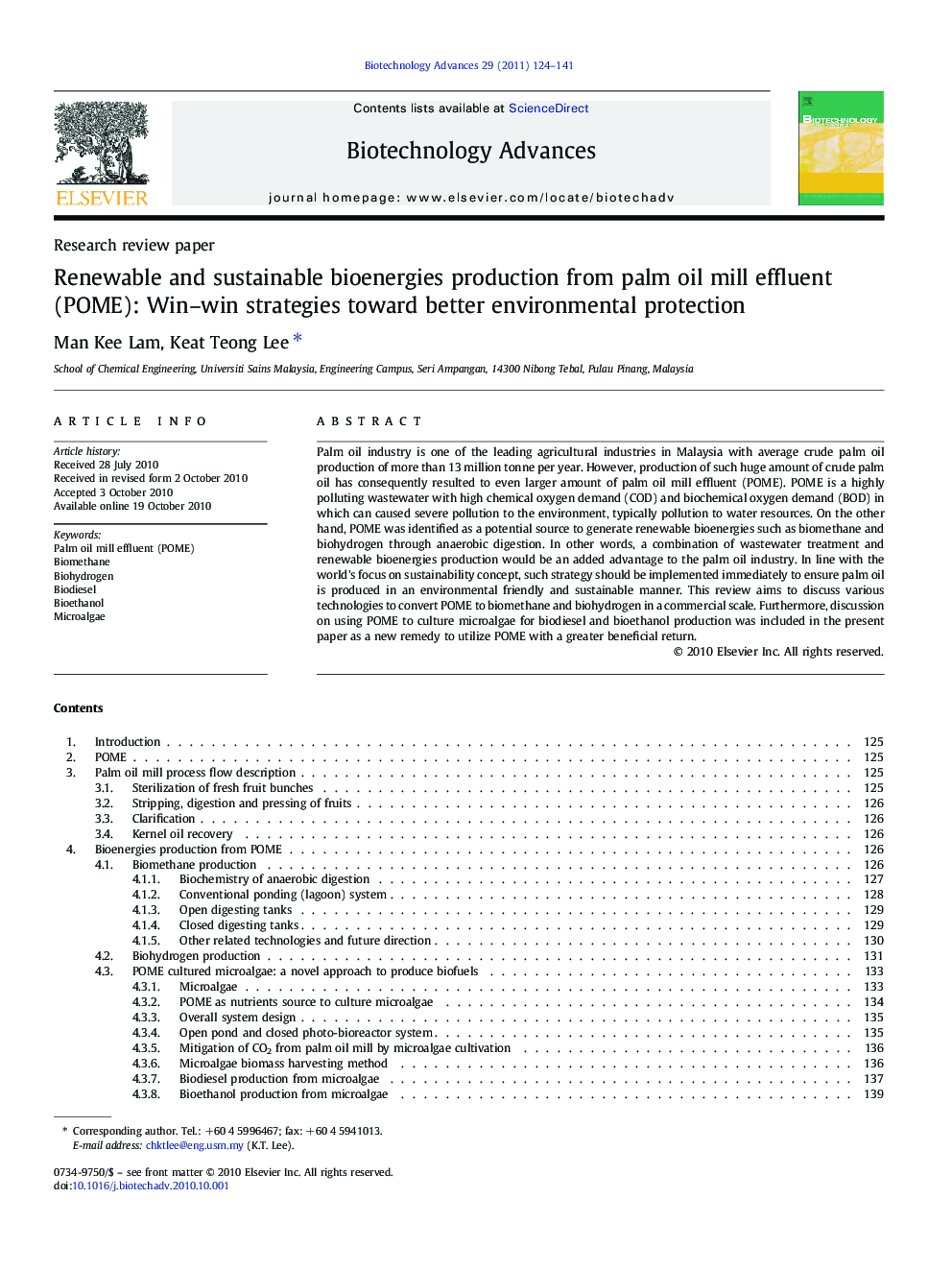| Article ID | Journal | Published Year | Pages | File Type |
|---|---|---|---|---|
| 14371 | Biotechnology Advances | 2011 | 18 Pages |
Palm oil industry is one of the leading agricultural industries in Malaysia with average crude palm oil production of more than 13 million tonne per year. However, production of such huge amount of crude palm oil has consequently resulted to even larger amount of palm oil mill effluent (POME). POME is a highly polluting wastewater with high chemical oxygen demand (COD) and biochemical oxygen demand (BOD) in which can caused severe pollution to the environment, typically pollution to water resources. On the other hand, POME was identified as a potential source to generate renewable bioenergies such as biomethane and biohydrogen through anaerobic digestion. In other words, a combination of wastewater treatment and renewable bioenergies production would be an added advantage to the palm oil industry. In line with the world's focus on sustainability concept, such strategy should be implemented immediately to ensure palm oil is produced in an environmental friendly and sustainable manner. This review aims to discuss various technologies to convert POME to biomethane and biohydrogen in a commercial scale. Furthermore, discussion on using POME to culture microalgae for biodiesel and bioethanol production was included in the present paper as a new remedy to utilize POME with a greater beneficial return.
